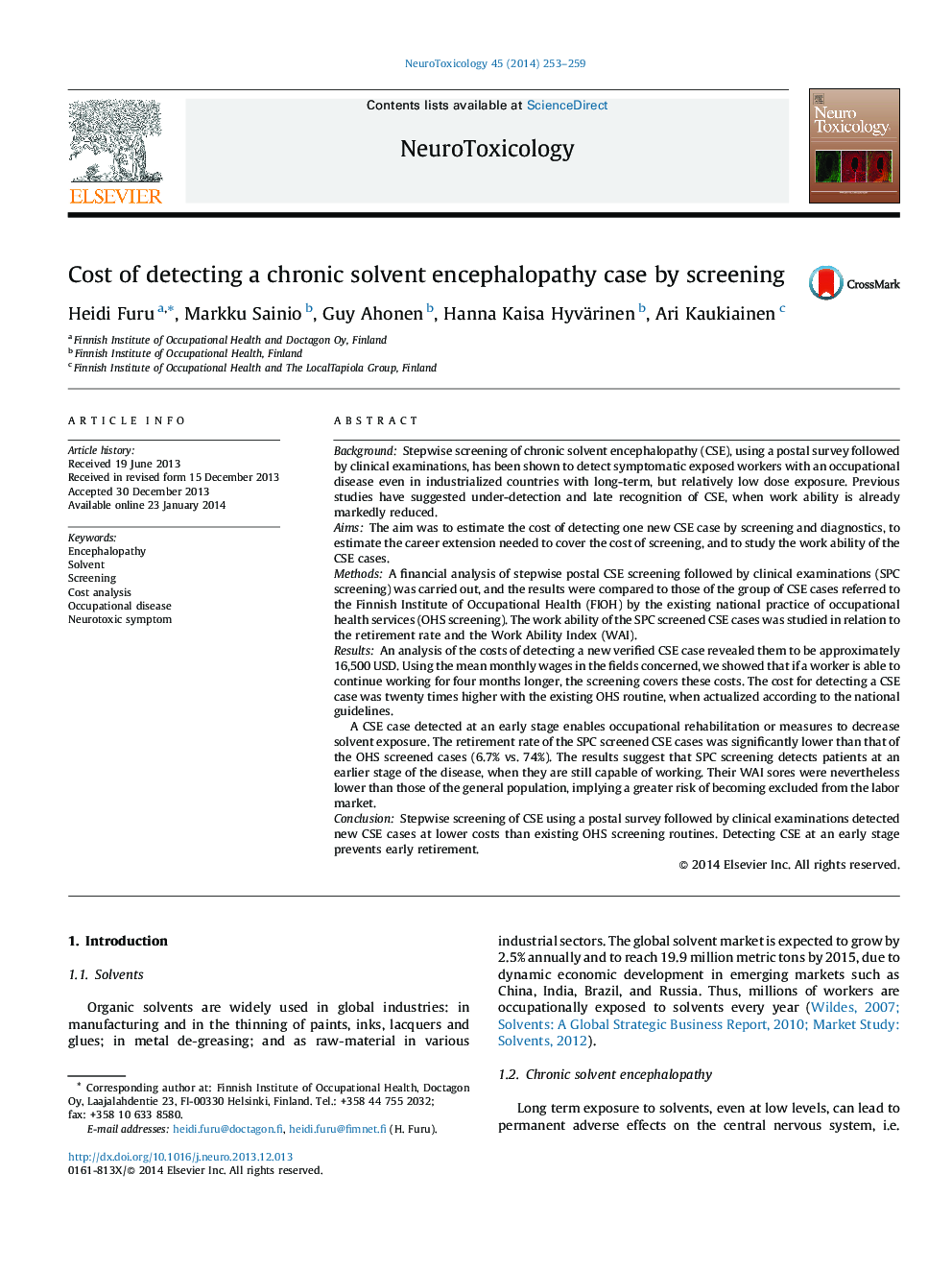| Article ID | Journal | Published Year | Pages | File Type |
|---|---|---|---|---|
| 5854933 | NeuroToxicology | 2014 | 7 Pages |
BackgroundStepwise screening of chronic solvent encephalopathy (CSE), using a postal survey followed by clinical examinations, has been shown to detect symptomatic exposed workers with an occupational disease even in industrialized countries with long-term, but relatively low dose exposure. Previous studies have suggested under-detection and late recognition of CSE, when work ability is already markedly reduced.AimsThe aim was to estimate the cost of detecting one new CSE case by screening and diagnostics, to estimate the career extension needed to cover the cost of screening, and to study the work ability of the CSE cases.MethodsA financial analysis of stepwise postal CSE screening followed by clinical examinations (SPC screening) was carried out, and the results were compared to those of the group of CSE cases referred to the Finnish Institute of Occupational Health (FIOH) by the existing national practice of occupational health services (OHS screening). The work ability of the SPC screened CSE cases was studied in relation to the retirement rate and the Work Ability Index (WAI).ResultsAn analysis of the costs of detecting a new verified CSE case revealed them to be approximately 16,500 USD. Using the mean monthly wages in the fields concerned, we showed that if a worker is able to continue working for four months longer, the screening covers these costs. The cost for detecting a CSE case was twenty times higher with the existing OHS routine, when actualized according to the national guidelines.A CSE case detected at an early stage enables occupational rehabilitation or measures to decrease solvent exposure. The retirement rate of the SPC screened CSE cases was significantly lower than that of the OHS screened cases (6.7% vs. 74%). The results suggest that SPC screening detects patients at an earlier stage of the disease, when they are still capable of working. Their WAI sores were nevertheless lower than those of the general population, implying a greater risk of becoming excluded from the labor market.ConclusionStepwise screening of CSE using a postal survey followed by clinical examinations detected new CSE cases at lower costs than existing OHS screening routines. Detecting CSE at an early stage prevents early retirement.
